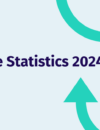
As of 2022, stats show that there have been significant strides when it comes to improving diversity and inclusion in the workplace. However, there is still so much further to go. Below you will find statistics from Gender, Ethnicity, LGBTQ+, Neurodiversity and Social Class on how they are treated in companies and organisations across the UK and US, based on recent studies (all sources are listed at the bottom of this blog).
Diversity and Inclusion: Gender
- Only 19.7% of employees on company or organisational boards are women.
- Companies with women as CEOs have a higher percentage of balanced boards (33.5%) compared to men (19.4%).
- For every 100 men promoted to managerial roles, only 86 women are promoted to the same roles.
- In the UK, the employment rate in every ethnic group was higher for men than women.
- Hiring chances can increase up to 46% for women taking part in blind applications.
Diversity and Inclusion: Ethnicity
- In the UK, the employment rate is only 62.8% for ethnic minorities.
- Ethnic minority employees hold only 1 in 16 top management positions in the UK.
- Every year, Black men with the same job and qualifications as their White peers earn salaries that are $1,500 less.
- Accessing venture capital with success is significantly more difficult for ethnic minority entrepreneurs than their White counterparts.
- Only 52 out of 1,099 of the most powerful jobs are held by ethnic minority individuals.
Diversity and Inclusion: LGBTQ+
- At work, 67.5% of LGBTQ+ employees reported hearing negative slurs, jokes or comments, about LGBTQ+ people.
- It is 2x more likely for Transgender adults to be unemployed in comparison to cisgender adults.
- 29.8% of LGBTQ+ employees reported experiencing at least one form of employment discrimination.
- Over half of LGBTQ+ employees are not open to their current supervisor about being LGBTQ+.
- The lack of diversity in the workforce would cause 41% of LGBTQ+ job seekers to not apply to a job at a company.
Diversity and Inclusion: Neurodiversity
- The UK unemployment rate for autistic adults is 78%.
- Among disabled people in the UK, Autistic adults have the lowest employment rate.
- Autism causes difficulty in day-to-day activities for 45.1% of Autistic adults.
- 89% of employees would like their organisation to include individuals with intellectual disabilities in their diversity and inclusion.
- It is 3 times more likely that people with intellectual and developmental disabilities are employed as knowledge workers, compared to 2014 numbers.
Diversity and Inclusion: Social Class
- Working class employees with the same education credentials as middle class employees earn 17% less on average.
- Hiring managers often hire employees based on their cultural fit. This unconsciously discriminates against applicants from working class backgrounds who have not had the same experiences or interests.
- Only one fifth of barristers attended a UK state school according to the Bar Services Council Diversity Report.
- People from working-class backgrounds who achieve higher grades than their peers of wealthier backgrounds are still less likely to go into professions such as medicine, finance and law.
- 72% of the Senior Civil Service hail from backgrounds deemed to be privileged.
At Druthers, it’s our mission and our passion to empower organisations to find the best person to make an impact on their work, from a diverse shortlist of remarkable talent. Get in touch with us to find out how your business can make a positive change to your hiring and retention processes.
Sources:
https://www2.deloitte.com/us/en/insights/topics/leadership/women-in-the-boardroom.html
https://www.mckinsey.com/featured-insights/diversity-and-inclusion/women-in-the-workplace
https://williamsinstitute.law.ucla.edu/wp-content/uploads/Workplace-Discrimination-Sep-2021.pdf
https://hbr.org/2021/12/autism-doesnt-hold-people-back-at-work-discrimination-does
https://www.bitc.org.uk/report/race-at-work-2021-the-scorecard-report/
https://www.glassdoor.com/employers/blog/diversity/
https://blog.clearcompany.com/12-workplace-diversity-statistics
https://didlaw.com/social-class-in-the-workplace-the-final-equality-frontier





